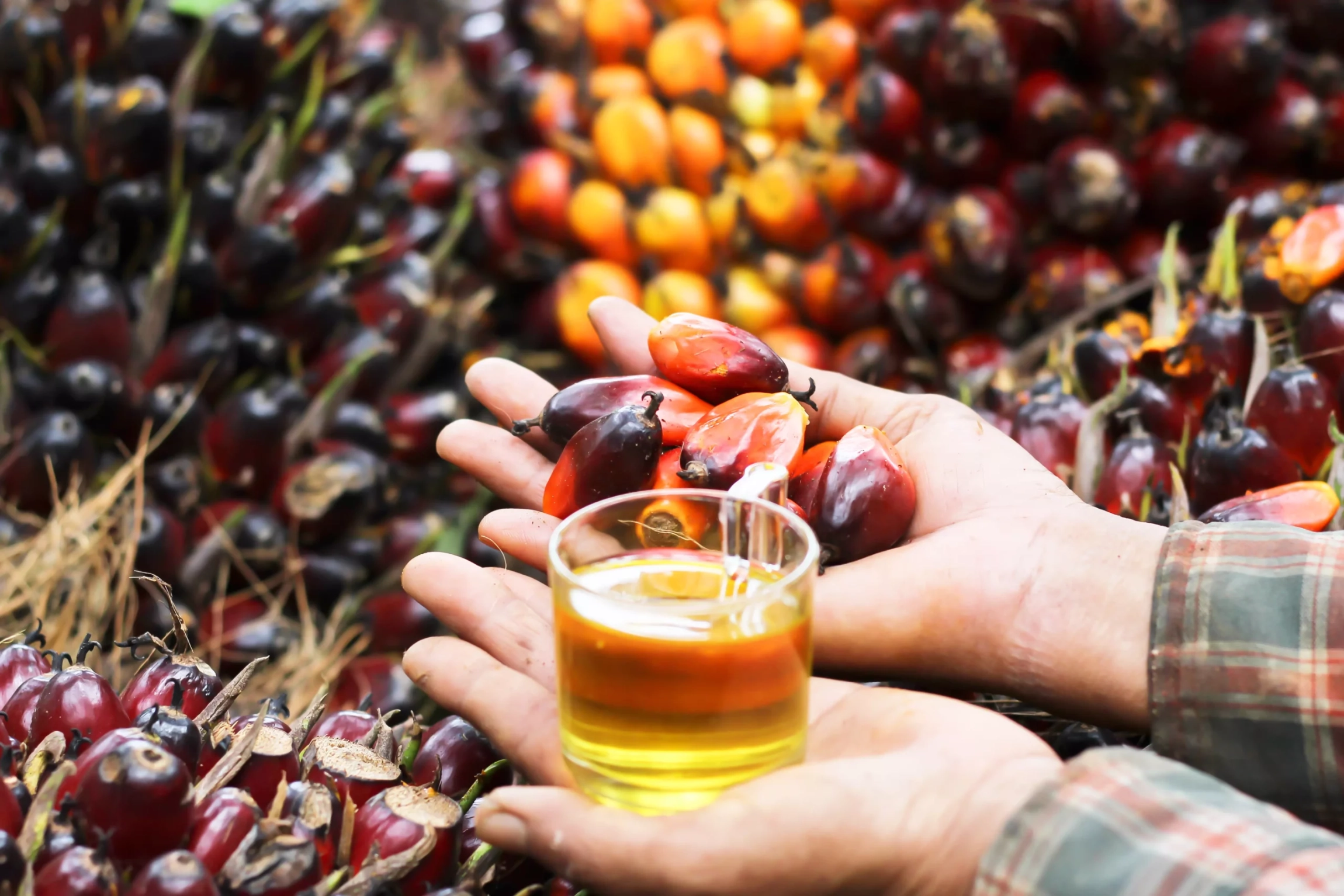
Palm oil is a reddish-orange oil extracted from the pulp of the fruit of the African palm which originated from the Elaeis guineensis tree of West Guinea. It has been used for more than 5,000 years. Although it is native to western Africa it is extensively cultivated in other tropical countries. The fruits are arranged in large bunches, each of which may carry up to 20 pounds of fruit. The oval shaped fruits are 1 to 2 inches long and an inch or more in diameter. The fruits of the African palm contain between 30 and 70 percent of nondrying oil. The seeds of the fruit, the seed kernels also contain oil. The picture below shows the redish-orange fruit of the African palm.
There are various methods used to extract the palm oil from the pulp and the seed. The method used most extensively is pressing the pulp to remove the oil. The pulp is macerated, pressed and then put in a centrifuge. Then the pulp is placed in boiling water because the oil floats to the top. Next, the solution is cooled and finally the oil is skimmed off the top of the water. The kernel oil is extracted by crushing and pressing or can be done with the help of solvents. After the oil is extracted it is heated at high temperatures to sterilize and purify it.
There are various methods used to extract the palm oil from the pulp and the seed. The method used most extensively is pressing the pulp to remove the oil. The pulp is macerated, pressed and then put in a centrifuge. Then the pulp is placed in boiling water because the oil floats to the top. Next, the solution is cooled and finally the oil is skimmed off the top of the water. The kernel oil is extracted by crushing and pressing or can be done with the help of solvents. After the oil is extracted it is heated at high temperatures to sterilize and purify it.
GENERAL SPECIFICATIONS
Refined Palm Oil is the oil obtained from the fleshy portion of the fruit from varieties of the palm Elaeis guineensis which has been refined, bleached and deodorized.
| Parameters | RANGE |
|
Specific gravity @ 25°C |
0.911-0.918 |
|
Iodine value |
50 - 55 |
|
Free fatty acids (as Oleic) |
0.1% max |
|
Moisture |
0.1% max |
|
Appearance |
White to pale yellow solid to semisolid lard-like fat |
|
Flavor and Odor |
Bland, odorless |



